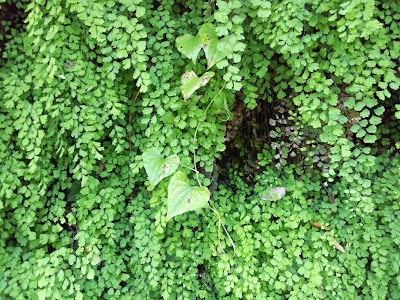Start in the warmer valleys, where the water slows down and there are many rock walls. It's shady here, maidenhair (Adiantum) grows thick and wild yam (Dioscorea) vines thread through.
By the streams, old friends. Wild monkshood (Aconitum), deadly toxic, hot and dry root by the cool streamside, pops up once in a while. With luck, some late-blooming narrow-leaved orchids (Dactylorhiza traunsteineria) come up in a patch, remembering days from the earlier season.
Getting higher up, the spruce stops and a few low junipers and mugo pine are left clinging to the white crumbly soil. Above the treeline, in the bright sun, so many familiar species: first the wild creeping thyme (Thymus serpyllum), classic bronchial remedy that's always found in the kitchen.
Alongside the thyme, eyebright (Euphrasia) appears in big patches, parasitizing the native grasses. It's an old remedy for itchy, tired eyes (especially during allergy season), and has a unique, multicolored flower. The patches are everywhere along the rocky trail.
And, more rare but still fairly available, are clumps of wild gentian (Gentiana campestris), also known as German gentian or field gentian with a characteristic five-parted flower. This isn't the official medicinal species (that's G. lutea), but it is nevertheless still quite bitter and local folk use the whole plant as a digestive aid (even the flower has an intensely classic bitter taste).
Where the grass gets taller, among the Campanula, sit a few Arnica montana plants, with their big, lone, yellow flowers. When I was young, we'd collect these, soak them whole in grappa (60+ percent alcohol), and use the product as a liniment for all manner of bruises, scrapes, falls, and sprains - which often occurred on walks to harvest the Arnica...

By Guido Masé







